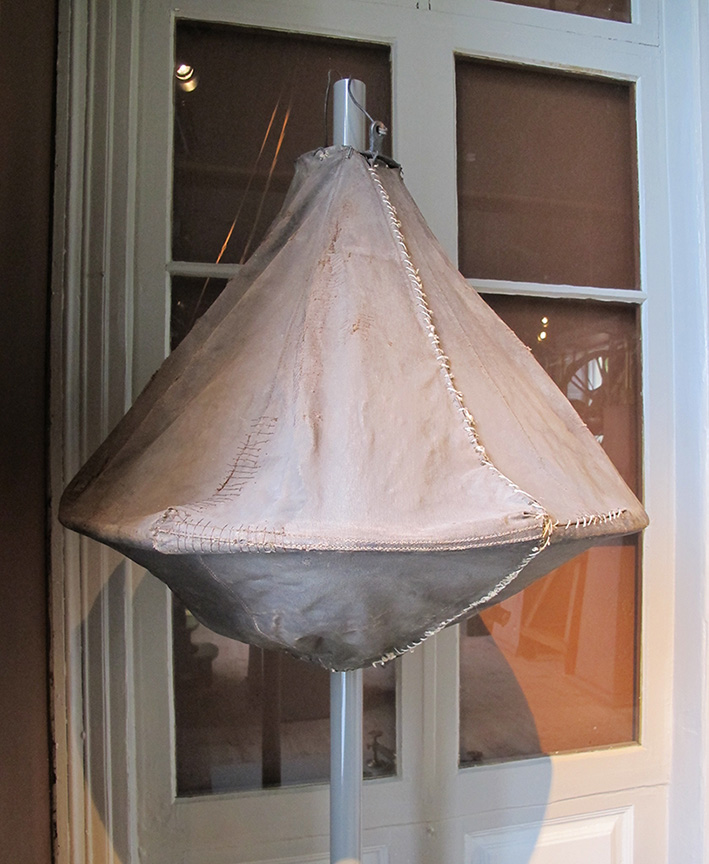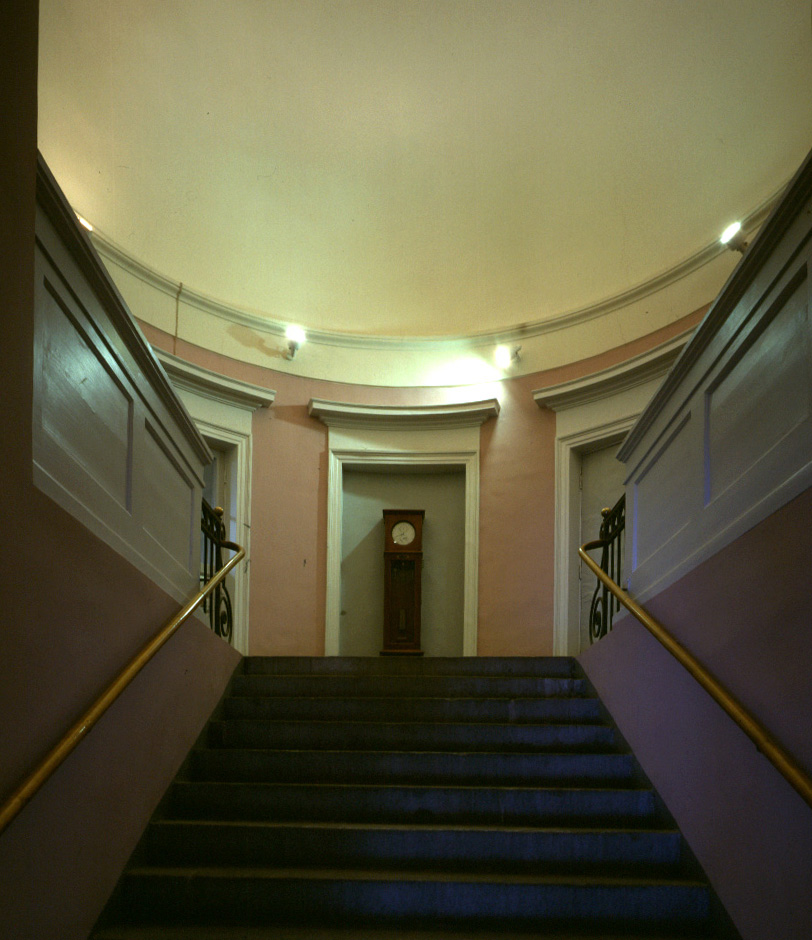A beautiful old, still-functioning precision pendulum clock hangs on the wall of a corridor leading to the Argelander lecture room at the Helsinki Observatory. This ‘Normal Zeit’ clock used to be placed in the lobby of the Observatory building where it functioned as a public timepiece that Helsinki residents could use to check the time. It is soon again time to turn the clock one hour forward when summer time begins. There are plenty of clocks at the Helsinki Observatory, including several precision clocks, the oldest of which dates back to the 18th century. How are these clocks linked to the Observatory?

The measuring of time is connected to movements in the sky. It takes our planet 24 hours to revolve around itself once. The time of day is determined by the side of the Earth that is facing the Sun at any given moment. Stars on the night side of the Earth can be used to determine the precise time of day. However, the coordinates of each star, or its place in the sky, must first be known.
Observation of stars and measurement of time in the past

The Observatory’s old observation room, the Meridian Hall, features an observation sofa used by an astronomy professor a few hundred years ago. Lying down on the coach in an ergonomically sound position, astronomers have observed the movements of stars and determined their coordinates, much like 18th-century Finnish astronomer Sigfrid Aronius Forsius, who favoured this position when making astronomical observations outdoors, giving rise to the old Finnish saying, “Lying on one’s back like an almanac maker.”
Above the couch in the ceiling of the hall is an oblong observation hatch in the north-south direction, from which a line called the meridian can be seen. The rotation of the Earth about its axis makes it appear that the stars on the night sky are slowly moving across the sky. Thus, new stars constantly appear in the hatch as others continue their movement across the sky. When astronomers wished to establish the coordinates of a specific star, they made a careful note of when the star was visible in the middle of the hatch, i.e., in the southern direction. This moment is known as the time when the star passes the meridian. To determine the exact time, precise clocks were, of course, also necessary. The telescope operated when lying on the sofa could also be simultaneously used to determine how high above the horizon the object was seen at the time it passed the meridian.
When these two parameters – the meridian passage time and the height of the object at the time of passage – are known, the coordinates of the star can be calculated. Until the mid-19th century, astronomical research focused largely on determining the position and movement of celestial bodies.

How was the meridian passage time determined in practice? Observations were made using several senses, in other words, the eye-ear method: when a star approached the middle of the hatch, i.e., the southern direction, astronomers could no longer look at the clock to count the seconds because they had to keep a careful lookout through the crosshairs and wait for the exact moment the star passed the southern direction. To do this, astronomers used their ears to listen to the last seconds ticking down just before the moment of passage. They then used what they had heard to calculate the exact meridian passage time. The best observers reached an accuracy of tenths of a second in their observations.

Once the coordinates of stars had been determined, they could be used to determine the exact time of day. And, of course, the time also had to be reported to the city dwellers. On display in the exhibition of the Helsinki Observatory is a time signal bag, which was raised to the mast on top of the building’s middle tower just before noon and dropped at noon sharp to signal the time. This was vital information for the ships docked at the port because the clocks on board were used to determine longitude at sea. When the Finnish public broadcasting company Yle began to broadcast a time signal, the Observatory’s time signal bag was retired.
The clock used as the Observatory’s public timepiece
But let’s return to the Normal-Zeit clock. It is an astronomical regulator clock made in Frankfurt, Germany. According to an inventory, the Observatory acquired the clock in 1917, which is also presumed to be roughly the year the clock was made. The manufacturer was TN, or Telefonbau und Normalzeit G.m.b.H., established by businessman Harry Fuld in 1899. TN originally manufactured telephones, but in 1902 it also began to sell electric clocks. The company became known for its master clock systems.

For a long time, the clock stood in a recess at the top of the stairs of the Observatory’s entrance hall. From 2009 to 2011 it was on loan to an exhibition at the Finnish Museum of Horology in Espoo, and an old large display cabinet took its place in the entrance hall. When the cabinet was moved to make way for a renovation of the building in 2010, a hidden treasure was revealed: a piece of an old trompe l’oeil door mural, also featuring a door handle of the type previously used in the building. Judging by the painting, it seems that the entrance hall has had several symmetrical trompe l’oeil doors, which have, however, been painted over at some point. The only remaining painting, which was discovered behind the cabinet, was used to restore one trompe l’oeil door mural.
Paula Kyyrö, chief guide of the Helsinki Observatory
Jaana Tegelberg, head of collections of the Helsinki University Museum
Translation: University of Helsinki Language Services.
Sources:
Forsius, Arno: Sigfrid Aronius Forsius (n. 1560–1624) tähtitieteilijänä. Available online at http://www.saunalahti.fi/arnoldus/safastro.htm
Lehtinen Tiina, Laitinen Rami, Ahoniemi Veikko: Helsingin Observatorion Kellokokoelma. Finnish Museum of Horology, 7 July 2011. Manuscript, Helsinki University Museum
Markkanen Tapio: Helsingin Observatorio. Ursan julkaisuja 130. Saarijärvi 2012.
Observatorio. Rakennushistorian selvitys. Part 1: Rakentaminen ja kunnossapito 1830–2009. Kati Salonen ja Mona Schalin Arkkitehdit Oy, 20 April 2010. Manuscript, Helsinki University Museum
Observatorio. Rakennushistorian selvitys. Part 2: Inventointi ja liitteet. Kati Salonen ja Mona Schalin Arkkitehdit Oy, 20 April 2010. Manuscript, Helsinki University Museum
